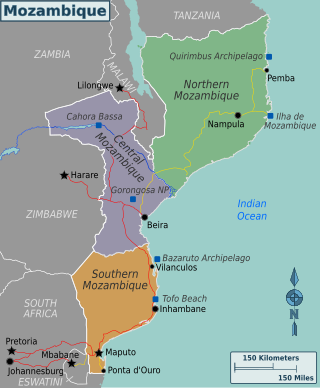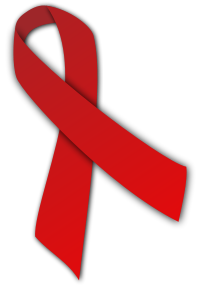
The Centers for Disease Control and Prevention (CDC) is the national public health agency of the United States. It is a United States federal agency under the Department of Health and Human Services, and is headquartered in Atlanta, Georgia.

The AIDS epidemic, caused by HIV, found its way to the United States between the 1970s and 1980s, but was first noticed after doctors discovered clusters of Kaposi's sarcoma and pneumocystis pneumonia in homosexual men in Los Angeles, New York City, and San Francisco in 1981. Treatment of HIV/AIDS is primarily via the use of multiple antiretroviral drugs, and education programs to help people avoid infection.

The Joint United Nations Programme on HIV and AIDS (UNAIDS) is the main advocate for accelerated, comprehensive and coordinated global action on the HIV/AIDS pandemic.

HIV/AIDS originated in Africa during early 20th century and is a major public health concern and cause of death in many African countries. AIDS rates varies significantly between countries, though the majority of cases are concentrated in Southern Africa. Although the continent is home to about 15.2 percent of the world's population, more than two-thirds of the total population infected worldwide – some 35 million people – were Africans, of whom 15 million have already died. Eastern and Southern Africa alone accounted for an estimate of 60 percent of all people living with HIV and 70 percent of all AIDS deaths in 2011. The countries of Eastern and Southern Africa are most affected, AIDS has raised death rates and lowered life expectancy among adults between the ages of 20 and 49 by about twenty years. Furthermore, the life expectancy in many parts of Africa is declining, largely as a result of the HIV/AIDS epidemic with life-expectancy in some countries reaching as low as thirty-nine years.

Tropical medicine is an interdisciplinary branch of medicine that deals with health issues that occur uniquely, are more widespread, or are more difficult to control in tropical and subtropical regions.

The United States President's Emergency Plan For AIDS Relief (PEPFAR) is a United States governmental initiative to address the global HIV/AIDS epidemic and help save the lives of those suffering from the disease. Launched by U.S. President George W. Bush in 2003, as of May 2020, PEPFAR has provided about $90 billion in cumulative funding for HIV/AIDS treatment, prevention, and research since its inception, making it the largest global health program focused on a single disease in history until the COVID-19 pandemic. PEPFAR is implemented by a combination of U.S. government agencies in over 50 countries and overseen by the Global AIDS Coordinator at the United States Department of State. As of 2023, PEPFAR has saved over 25 million lives, primarily in Sub-Saharan Africa.

The global epidemic of HIV/AIDS began in 1981, and is an ongoing worldwide public health issue. According to the World Health Organization (WHO), as of 2021, HIV/AIDS has killed approximately 40.1 million people, and approximately 38.4 million people are infected with HIV globally. Of these 38.4 million people, 75% are receiving antiretroviral treatment. There were about 770,000 deaths from HIV/AIDS in 2018, and 650,000 deaths in 2021. The 2015 Global Burden of Disease Study estimated that the global incidence of HIV infection peaked in 1997 at 3.3 million per year. Global incidence fell rapidly from 1997 to 2005, to about 2.6 million per year. Incidence of HIV has continued to fall, decreasing by 23% from 2010 to 2020, with progress dominated by decreases in Eastern Africa and Southern Africa. As of 2020, there are approximately 1.5 million new infections of HIV per year globally.

Taiwan's epidemic of HIV/AIDS began with the first case reported in December 1984. On 17 December 1990 the government promulgated the AIDS Prevention and Control Act. On 11 July 2007, the AIDS Prevention and Control Act was renamed the HIV Infection Control and Patient Rights Protection Act.
The Caribbean is the second-most affected region in the world in terms of HIV prevalence rates. Based on 2009 data, about 1.0 percent of the adult population is living with the disease, which is higher than any other region except Sub-Saharan Africa. Several factors influence this epidemic, including poverty, gender, sex tourism, and stigma. HIV incidence in the Caribbean declined 49% between 2001 and 2012. Different countries have employed a variety of responses to the disease, with a range of challenges and successes.
HIV/AIDS in China can be traced to an initial outbreak of the human immunodeficiency virus (HIV) first recognized in 1989 among injecting drug users along China's southern border. Figures from the Chinese Center for Disease Control and Prevention, World Health Organization, and UNAIDS estimate that there were 1.25 million people living with HIV/AIDS in China at the end of 2018, with 135,000 new infections from 2017. The reported incidence of HIV/AIDS in China is relatively low, but the Chinese government anticipates that the number of individuals infected annually will continue to increase.
The very high rate of HIV infection experienced in Uganda during the 1980s and early 1990s created an urgent need for people to know their HIV status. The only option available to them was offered by the National Blood Transfusion Service, which carries out routine HIV tests on all the blood that is donated for transfusion purposes. The great need for testing and counseling resulted in a group of local non-governmental organizations such as The AIDS Support Organisation (TASO), Uganda Red Cross, Nsambya Home Care, the National Blood Bank, the Uganda Virus Research Institute together with the Ministry of Health establishing the AIDS Information Centre in 1990. This organization worked to provide HIV testing and counseling services with the knowledge and consent of the client involved.

Sexually transmitted infections (STIs), also referred to as sexually transmitted diseases (STDs) and the older term venereal diseases, are infections that are spread by sexual activity, especially vaginal intercourse, anal sex, and oral sex. STIs often do not initially cause symptoms, which results in a risk of passing the infection on to others. Symptoms and signs of STIs may include vaginal discharge, penile discharge, ulcers on or around the genitals, and pelvic pain. Some STIs can cause infertility.
Since the first HIV/AIDS case in the Lao People's Democratic Republic (PDR) was identified in 1990, the number of infections has continued to grow. In 2005, UNAIDS estimated that 3,700 people in Lao PDR were living with HIV.

Mozambique is a country particularly hard-hit by the HIV/AIDS epidemic. According to 2008 UNAIDS estimates, this southeast African nation has the 8th highest HIV rate in the world. With 1,600,000 Mozambicans living with HIV, 990,000 of which are women and children, Mozambique's government realizes that much work must be done to eradicate this infectious disease. To reduce HIV/AIDS within the country, Mozambique has partnered with numerous global organizations to provide its citizens with augmented access to antiretroviral therapy and prevention techniques, such as condom use. A surge toward the treatment and prevention of HIV/AIDS in women and children has additionally aided in Mozambique's aim to fulfill its Millennium Development Goals (MDGs). Nevertheless, HIV/AIDS has made a drastic impact on Mozambique; individual risk behaviors are still greatly influenced by social norms, and much still needs to be done to address the epidemic and provide care and treatment to those in need.
With less than 0.1 percent of the population estimated to be HIV-positive, Bangladesh is a low HIV-prevalence country.
Since HIV/AIDS was first reported in Thailand in 1984, 1,115,415 adults had been infected as of 2008, with 585,830 having died since 1984. 532,522 Thais were living with HIV/AIDS in 2008. In 2009 the adult prevalence of HIV was 1.3%. As of 2016, Thailand had the highest prevalence of HIV in Southeast Asia at 1.1 percent, the 40th highest prevalence of 109 nations.
AIDS Information Centre-Uganda (AIC) is a Non-Governmental Organization in Uganda established in 1990 to provide Voluntary Counseling and Testing (VCT) for Human Immune Deficiency Virus (HIV). The Organization was founded as a result of growing demand from people who wanted to know their HIV status. At this time the HIV/AIDS in Uganda was high.

AIDS amendments of 1988, better known as the Health Omnibus Programs Extension (HOPE) Act of 1988, is a United States statute amending the Public Health Service Act. The Acquired Immune Deficiency Syndrome amendments were compiled as Title II - Programs with Respect to Acquired Immune Deficiency Syndrome within the HOPE Act of 1988. The Title II Act appropriated federal funding for Acquired Immune Deficiency Syndrome (AIDS) education, prevention, research, and testing. The U.S. legislative title provisioned the establishment of the presidentially appointed National Commission on AIDS. The S. 2889 legislation was passed by the 100th U.S. Congressional session and signed by President Ronald Reagan on November 4, 1988.
Children in Uganda are regularly exposed to many preventable health risks. According to the WHO, the country ranks 186th out of 191 eligible countries in life expectancy. The country also ranks 168 out of 188 in infant mortality rates, with a lower rank reflecting lower infant mortality. There are also about 97 infant mortalities out of 1,000. There are many cultural factors influencing the current health status of Uganda including the negative stigmas associated with sex, and the wood-burning stoves. The former of these has resulted in a severe lack in education and communication necessary to improve the health and well-being of children. There are multiple factors negatively impacting the health of children in Uganda. Those factors include HIV/AIDS, malnutrition, lack of sanitation, vaccinations, insufficient drugs, and an insufficient number of motivated healthcare workers. The World Health Organization attributes the tragic situation to wars that occurred before 1986 as well as the HIV/AIDS epidemic. The HIV/AIDS epidemic has resulted mainly from the mother-to-child transmission that spreads from one generation to the next, which could have easily been prevented from educating mothers and providing them with medical treatment. Medical treatment could protect them and their children. The knowledge of HIV, how people can contract it, their individual HIV status and counseling for the disease. These are several factors that assist in the prevention of HIV/AIDS and the HIV/AIDS epidemic, which is the leading cause of the detrimental state of child health in Uganda.

Social and political activism to raise awareness about HIV/AIDS, as well as to raise funds for effective treatment and care of people with AIDS (PWAs), has taken place in multiple nations across the world since the 1980s. As a disease that began in marginalized populations, efforts to mobilize funding, treatment, and fight discrimination have largely been dependent on the work of grassroots organizers directly confronting public health organizations as well as politicians, drug companies, and other institutions.












